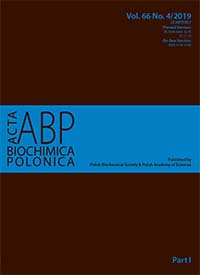Nanoparticles as energy donors and acceptors in bionanohybrid systems
Abstract
The bionanohybrids are the junctions of at least two objects of different origin: abiotic and biotic. The abiotic part is a nanoparticle (often a fluorescent quantum dot), the biotical one may be a protein (especially fluorescent one or redox-active one), nucleic acid, carbohydrate as well as a simple organic molecule. When such a junction undergoes illumination, the energy transfer between the partners is possible. The nanoparticles, depending on their characteristics, may be donors, acceptors or mediators of the energy transfer. In most cases, the mechanism of the transfer is the Förster resonance energy transfer (FRET) or the electron transfer (ET). Here, we reviewed the newest achievements in the field with special attention paid to those bionanohybrids which allow FRET or ET. Such nanohybrids are important not only for exploration of the mechanism of the partner interaction but mainly for working out nanobiodevices for biosensing and nanotools for modern therapies.
Acta Biochimica Polonica is an OpenAccess quarterly and publishes four issues a year. All contents are distributed under the Creative Commons Attribution-ShareAlike 4.0 International (CC BY 4.0) license. Everybody may use the content following terms: Attribution — You must give appropriate credit, provide a link to the license, and indicate if changes were made. You may do so in any reasonable manner, but not in any way that suggests the licensor endorses you or your use.
Copyright for all published papers © stays with the authors.
Copyright for the journal: © Polish Biochemical Society.


